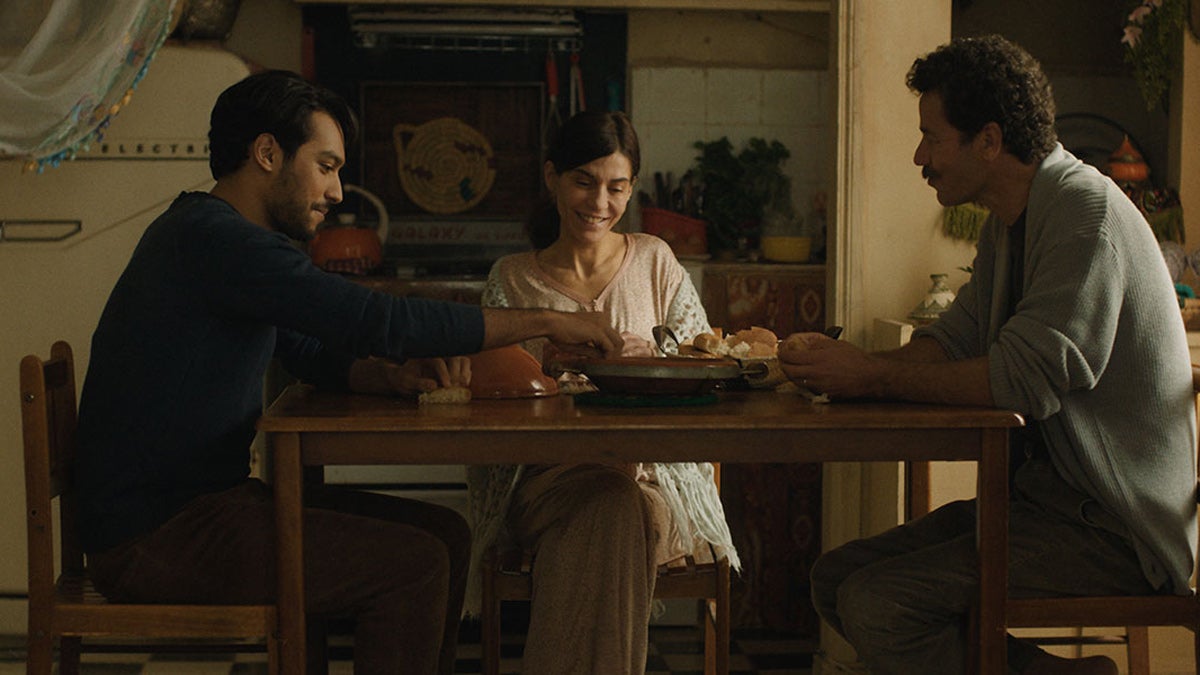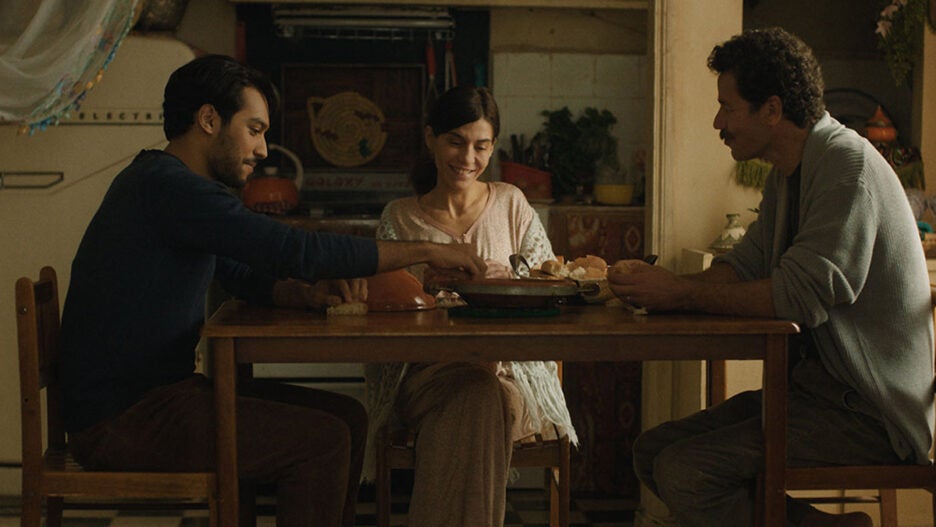
Every close-up of a stitch feels like an eternity

“The Blue Caftan”
“The Blue Caftan,” the second feature from Moroccan writer-director Maryam Touzani, is not exactly packed with incident. It is basically a standard triangle drama that has been stretched out to an interminable length.
Halim (Saleh Bakri) and his wife Mina (Lubna Azabal) run a store specializing in caftans in Salé, Morocco and hire an apprentice named Youssef (Ayoub Missioui) to work with them. Halim steals looks at Youssef nearly right away, and Mina sees her husband looking. Touzani trains her camera very closely on her characters and rarely lets in any outside influences; the majority of the movie takes place inside the shop and also a nearby bathhouse where Halim goes to have furtive sex with men.
Touzani’s camera follows Halim and another man to a cubicle at the bathhouse but then cuts after they close the door. Some time later in the film, when we see Halim at the bathhouse with another man and the door to their cubicle closes, the camera pans down this time so that we see their feet. In each case, we are kept at arm’s length.
Mina is shown praying and Halim counsels Youssef about the ways of the caftan and the art of fine stitching, or what he calls “the maalem’s centimeter.” Mina observes her husband giving their young employee these fabric tips, so to speak, and it is made clear that they have had other male apprentices who have moved on.

Touzani’s script parcels out information in such a lackadaisical fashion that a misunderstanding between Mina and Youssef over pink satin, which could have been handled in five minutes or less, takes most of the film to resolve and it doesn’t exactly qualify as an intriguing subplot.
We see Mina stroke Halim’s chest in bed at night, which means it is time for them to have bad and emotionally disconnected sex while he stares off into the distance, but the long-married couple are not bad friends. In fact, these two laugh over their customers so much, and Halim is so haughty with them (“It’s not royal blue, it’s petroleum blue!” he cries of the titular caftan), that it’s a wonder they are still in business, and this is before we learn Mina is ill and they have been paying steep medical bills.
Halim keeps saying things to Youssef like, “Put the needle in well,” and Mina will not hear of Halim staying at home to nurse her: “You must finish that caftan!” she tells him. This should all be somewhat comic yet it never quite is. The film does not fall into the familiar cliches of this situation partly because what is actually going on cannot be spoken of until near the end. But the prospect of a confrontation scene, even a cliched one, begins to seem welcome amidst all the close-ups of slow stitching, the warm, vague smiles of complicity between the characters, and all the stolen glances.
“The Blue Caftan” is not helped by the fact that a caftan has a camp connotation in gay American culture that it does not have in Moroccan culture; mainly because of Elizabeth Taylor’s caftan period which ran roughly from 1968 to the early 1980s, and all the camp movies that went with it. Halim works on his “petroleum blue” caftan throughout this film and when we finally see it, with all its gold stitching, it looks exactly like something Taylor could have worn in “Secret Ceremony” or “Boom!”

Youssef finally confesses his love to Halim, but even though we have spent a lot of time observing him he has barely been characterized. When Youssef accompanies his employer to the bathhouse Touzani shows them both getting massages, but we do not see what they do afterward (if they do anything). This feels like a fatal reticence, just as every scene and every close-up of a stitch in “The Blue Caftan” feels like an eternity.

0 Comments :
Post a Comment